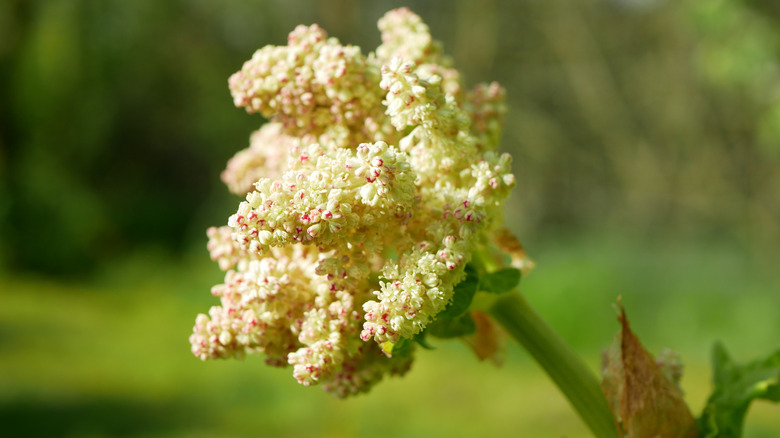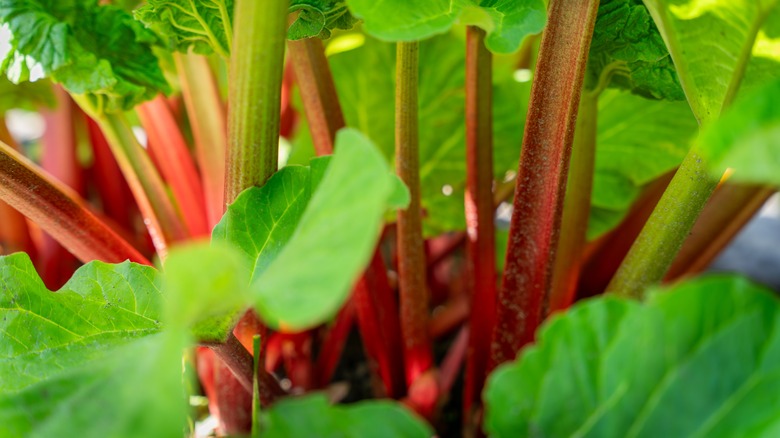Stop Rhubarb From Flowering Before It Ruins Your Harvest
Picking your own rhubarb (Rheum rhabarbarum) for jams, jellies, and pies is one of the best parts of a perennial spring garden. Because rhubarb is in season from April through June, you can enjoy it far earlier than many other crops. Unfortunately, if your rhubarb plant is prone to quickly bolting — that is, beginning to flower and produce seeds — you'll often have a stunted plant with fewer tasty stalks. While you don't want your rhubarb plant to flower, don't panic if you do notice a flower stalk forming. Just cut it off as quickly as possible so the plant can redirect its energy back to creating edible leaf stalks.
Not all factors that lead rhubarb to bolt are entirely within your control, but you can limit flowering by choosing the right cultivar, working to prevent environmental stress, and remembering to divide your older rhubarb plants.
While any variety of rhubarb can bolt under the right conditions, some cultivars are notorious for going to flower quickly. These include older varieties like 'Victoria' and 'MacDonald.' Consider opting instead for a cultivar like 'Canada Red,' which has less of a reputation for flowering.
Make sure your rhubarb plant is healthy and stress-free
Rhubarb plants are especially known for bolting when they are facing environmental stress. This can include high heat as well as drought. While you can't entirely control the temperature, keeping your rhubarb's soil moist and using a layer of mulch can help protect it from extreme temperature shifts. Another factor that can stress your rhubarb plant and cause it to quickly bolt is poor soil quality. Rhubarb thrives in rich soil, so if a soil test shows that your soil is lacking nutrients, don't be afraid to amend it to make it a better home for your rhubarb plant.
Rhubarb plants are more inclined to begin flowering when they are mature. You can limit this by dividing your rhubarb every few years. The best method for dividing your rhubarb is to wait until the plant is dormant and then dig up and divide the crown. Just make sure that there is at least one bud on each of the new crowns you make. Leave a few buds on the parent plant so that you will be able to harvest from it in the upcoming season. Wait at least a year or two before you begin harvesting from the new crowns.

